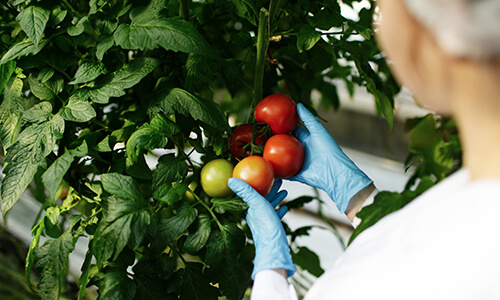Calvin Benson Cycle Fixing CO2
The Calvin cycle is a part of the photosynthesis processes responsible for assimilation of atmospheric CO2 into sugar phosphates used in wider metabolism for plant growth and development.
The Calvin cycle takes place in the stroma within the chloroplasts of plant cells. This cycle involves eleven enzymes and can be divided into three stages; (i) carboxylation carried out by carbon dioxide fixing enzyme ribulose-1,5-bisphosphate carboxylase oxygenase (Rubisco), (ii) reduction of the C3 acids formed by the carboxylation reaction (the stage of sugar formation), and (iii) regeneration of ribulose-1:5-bisphosphate (RuBP), the CO2-acceptor molecule at Rubisco.
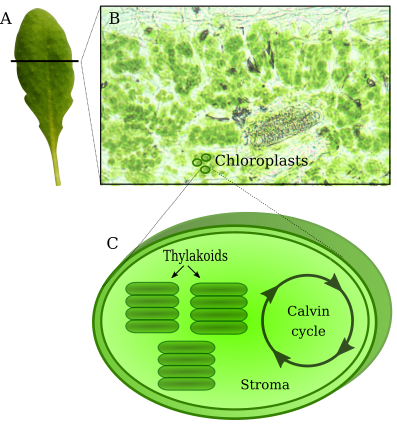
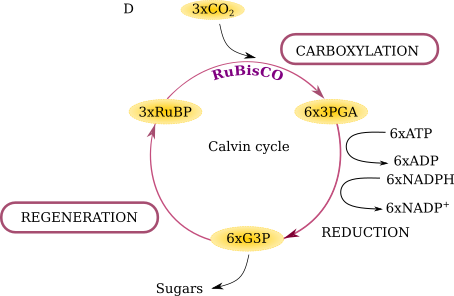
Figure: Vertical section of an Arabidopsis thaliana leaf (A) containing chloroplasts (B). The simplified schematic shows the internal structure of a chloroplast indicating that the Calvin cycle takes place in the chloroplast stroma (C). A simplified Calvin cycle shows three stages of the cycle and the important limiting factors or steps (in purple) to be improved within CAPITALISE (D).
Scientists in CAPITALISE will focus on “Tuning the Calvin Cycle”, specifically improving the most limiting factors: Rubisco activity, and the activation state and activity of the RuBP regeneration. Transgenic work in model plant species has shown that relaxing these limitations leads to increased capacity to assimilate CO2 leading to increased yields.
Although the components of the Calvin Cycle are very conserved between plant species, regulation of this cycle varies substantially, both between species and within species. The CAPITALISE team will explore natural variation, and exploit new GM tools, to identify in both RuBP carboxylation and regeneration limitations of the Calvin cycle, and analyse which physiological mechanisms are involved.
Read more about

Photosynthesis

Kinetics

Tuning chl
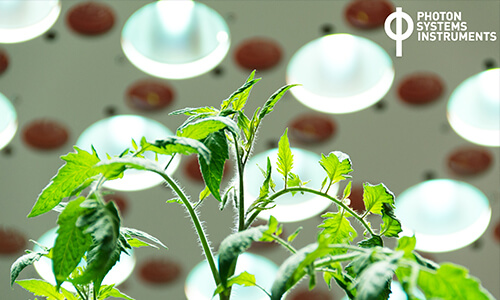
Phenotyping
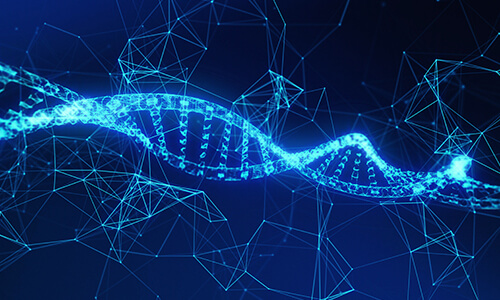
Data modelling
